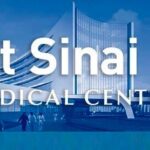.jpg) May is American Stroke Month. Though Stroke remains the No. 3 leading killer of American men and women, the American Heart Association/American Stroke Association has announced its “Top Ten Advances in Stroke Research in 2010”.
May is American Stroke Month. Though Stroke remains the No. 3 leading killer of American men and women, the American Heart Association/American Stroke Association has announced its “Top Ten Advances in Stroke Research in 2010”.
1. Clot-dissolving treatment for acute ischemic stroke found beneficial in the first 4.5 hours after onset
A combined patient analysis of eight trials of intravenous tissue plasminogen activator for acute ischemic stroke reinforced prior findings of a strong time-to-treatment effect, with greatest benefit in the first few hours after onset, and, for the first time, demonstrated increased mortality from late treatment beyond 4.5 – 6 hours after onset.
2. New mechanism of emboli clearance from the brain vasculature discovered
This study identified an entirely new way by which brain blood vessels are kept open by the body in the face of clots – extravasation. Clots that aren’t able to be dissolved are sometimes pushed out through blood vessel walls into the surrounding tissue, restoring nourishing flow in blood vessels.
3. Carotid endarterectomy and carotid artery stenting directly compared
The large CREST trial compared the two major methods to reopen narrowed carotid arteries carrying blood flow to the brain: carotid endarterectomy and carotid. Both techniques had similar rates of success and complication, but for patients under age 70, stenting appeared advantageous while among older patients, endarterectomy appeared advantageous.
4. Million person milestone
In an analysis of the first one million stroke patients enrolled in the national Get With the Guidelines® – Stroke quality improvement program at nearly 1400 hospitals across the country, quality of care on 10 performance measures improved substantially from 2003 to 2009. More than 80 percent of patients were receiving defect-free care by 2009, up from less than half in 2003.
5. International study identifies ten major risk factors for stroke
In the INTERSTROKE study, 10 risk factors were found to be associated with 90 percent of the risk of stroke. Targeted interventions that reduce blood pressure and smoking, and promote physical activity and a healthy diet, could substantially reduce the worldwide burden of stroke.
6. Ultrasound detection of silent emboli identifies patients at high risk of stroke
This international, multicenter, prospective study confirms detection of silent, microclots traveling to the brain on transcranial Doppler ultrasound identifies a subgroup of patients with asymptomatic narrowing of the carotid artery who are at high risk for stroke and might benefit from surgery or stenting.
7. Robot-assisted therapy beneficial for long-term arm impairment after stroke
This randomized trial suggested that robot-assisted therapy can improve the rehabilitation of arm function after stroke compared with ordinary care, though no more than intensive therapist care.
8. Genetic findings important in understanding, treating aneurysms
Two new studies looked at the genetics and treatment of aneurysms. Saccular intracranial aneurysms are located in the intracranial arterial wall; their hemorrhage commonly results in severe neurologic impairment and death. This multicenter genome-wide association study identified three new and confirmed two previously-suspected chromosome sites as harboring genes predisposing to the formation of intracranial aneurysms. Vascular Ehlers-Danlos syndrome is a rare, genetic, severe disease that causes arterial dissections and ruptures. This randomized trial found treatment with a beta-blocker medication to lower mechanical stress on arterial walls prevents dissection and hemorrrhages in Ehlers-Danlos patients.
9. Lowering blood pressure early reduces brain hemorrhage growth
One out of six strokes is due to bleeding into the brain. Two pilot trials found that aggressively lowering blood pressure, starting within six hours of stroke onset, is feasible and can reduce hemorrhage expansion. Larger trials have been launched to determine if this improves patient final outcome.
10. Physical activity, even moderate in degree, reduces stroke risk
A large study found leisure-time physical activity, even in modest degree, is associated with lower stroke risk in women. In particular, walking was generally associated with lower risks of total, ischemic, and hemorrhagic stroke.


























